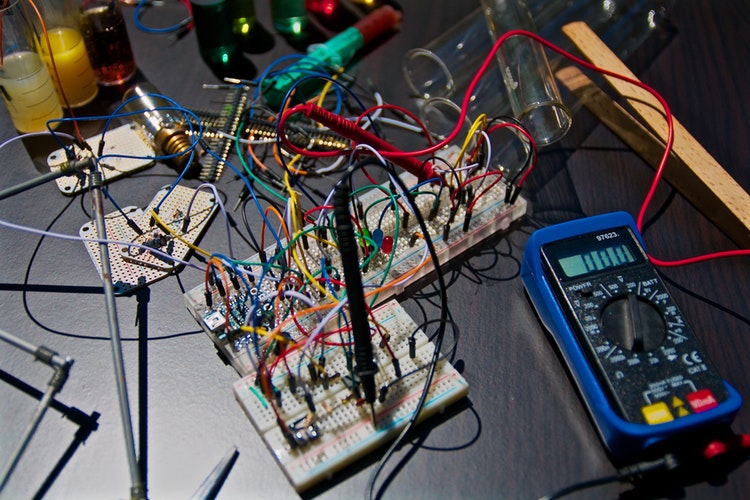What important safety precautions should you follow when inspecting your home’s electrical system?
- Disconnect from the power source
- Use the proper gear and tools
- Remove every drop of water
- Mark and report all defective equipment
Incidents, casualties, and billions worth of damage have stemmed from defective and poorly maintained electrical systems, which is why it is imperative that you conduct a regular inspection of your home’s electrical system. Usually, these inspections are done by someone from a trusted and reliable electrical supplier in Metro Manila but you can get by with doing it yourself every so often.
Professionals recommend that you have your electrical system inspected twice a year (or once every six months) but the number may increase depending on the condition of your house. An older one may require more inspections and, although necessary, it can get a little pricey. As a solution, try to do some of the inspections yourself – say, you do one or two out of the required number of times.
Naturally, there is danger in doing them yourself but you can easily sidestep them. The only thing you have to do is take note of the necessary safety precautions and follow them every time you’re doing an inspection.
Disconnect from the Power Source
Electrocution is the number one hazard you want to avoid and the best way to do so is to completely cut off the flow of electricity by disconnecting your electrical system from its power source. In short, briefly switch off your fuse box or breaker box while you’re doing the job.
When it comes to replacing electrical parts or equipment, many make the mistake of thinking that it’s safe as long as it’s switched off but that’s not the case. Some lingering currents can still flow into the equipment and cause severe damage and injuries. If you want to ensure that the system is dead or not carrying any current, then use electrical testers and voltage detectors.
Please note that this doesn’t apply when you’re inspecting functionality because you need electricity to check if your outlets and switches are working. Mostly, this applies when you’re looking for damaged wires and components as well as servicing parts. Additionally, once you’ve turned off the main power switch, stick a note on it so that everyone knows not to flip it back on.
Use the Proper Gear and Tools
Now, just because you’ve cut off the main power source doesn’t mean you’re automatically out of danger. As said before, some lingering currents may still remain and cause electrocution. For your protection, make sure you use the proper gear and tools for the job.
What we mean by this is you have to use tools with insulated handles and wear protective gear, such as rubber gloves and boots. The importance of insulated handles is they prevent your tools from conducting electricity and directing it to your body. The purpose of rubber gloves and boots is pretty self-explanatory, so there’s no need to go into the details.
Aside from those, you also have to wear tight-fitting clothes or at least avoid loose clothing that could be caught on different items. These things are especially important when you have to handle live wires, equipment, and parts.
Remove Every Drop of Water
Everyone knows that water and electricity don’t mix but not many realize the true potency of this combination. Most believe that a huge amount of water is needed to conduct electricity but even the slightest amount actually poses danger.
Damp floors, slightly sweaty hands, and tiny pools of water – these things are enough to cause grounds and electrocution, so avoid working in an environment that is wet or damp. It should also go without saying that you should never handle soaked electrical parts and equipment while they are live or energized. You firstly need to disconnect your system from the main power source before you can wipe or let it dry.
If, for some reason, it is impossible to remove traces of water and such, then leave it be and let the professionals handle the job. They know of ways to tackle the situation safely and appropriately, so don’t be ashamed to enlist their help.
Mark and Report All Defective Equipment
The main purpose of this task is to find out if there are defective parts and equipment that need to be replaced and repaired, so make sure you mark every single one lest you want your efforts to go to waste.
After you’re done with the inspection, you should have a complete list of defective wires and parts. Now, you can choose to repair or replace some of these yourself, but make sure that you let the professionals handle the more extensive projects. Broken wires and malfunctioning outlets or switches are some examples of things that carry a high risk of electrocution.
It is in your best interest to stick to tasks such as changing light bulbs or installing fixtures. As said in the previous subhead, these experts have knowledge and experience in the field and know of safe ways to fix your electrical system, so put your trust in them.
Key Takeaway
There are dangers in inspecting your home’s electrical system, but that doesn’t mean that you always have to call in someone from an electrical supplier in Metro Manila to do it for you. You can safely do it yourself as long as you perform the necessary safety precautions that are written in this article. These things will save you from getting electrocuted and may even prevent electrical fires and other incidents.
Aside from taking note of this when doing an inspection, it is also recommended that you apply these safety precautions when servicing and repairing electrical equipment. Those jobs carry the same amount of risk and danger to your health—and with that said, it is always important to prioritize your safety!

